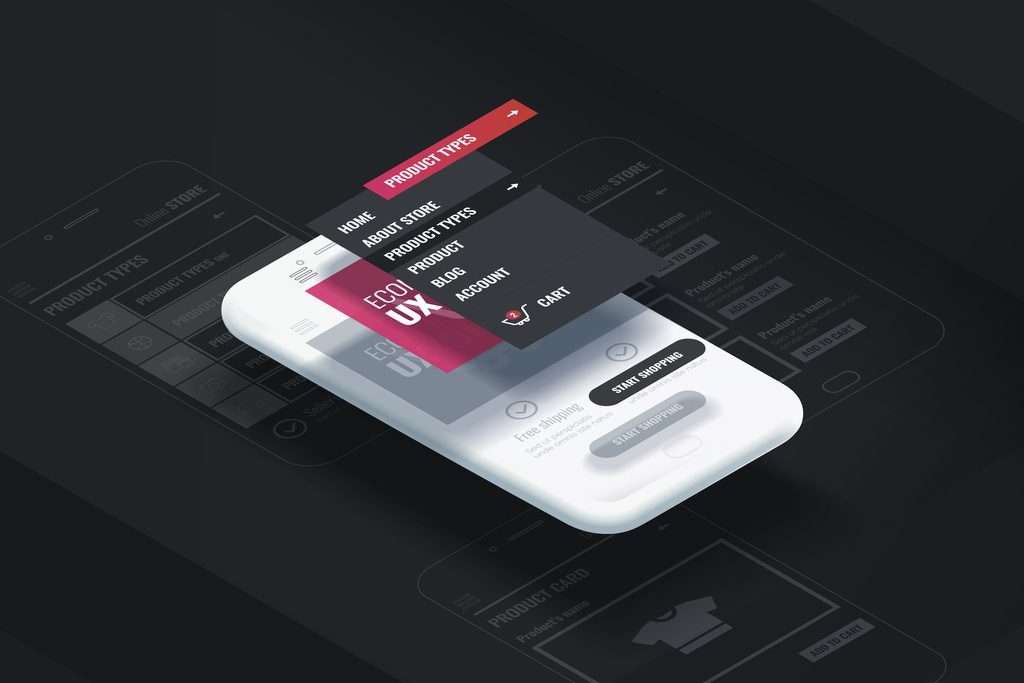But first, what exactly is UI/UX research?
What is UI/UX Research?
UI/UX research – or design research, as its also known as – involves a variety of methods used to add context and insight to the design process. When done correctly, design research helps to produce a better understanding between the user and the designer. Design research is user-centered and carried out with the end-user in mind. The research allows the design team to gather all the important information they need to complete the task to match the user requirements. Although most of the techniques used are unique to the UI/UX design world, some of them are borrowed from academics, scientists, and market researchers. The research itself has two main focus points. Firstly, you’ll need to gather the necessary data using a variety of techniques such as conducting usability tests, interviews, collecting surveys, and reviewing existing literature, data, or analytics. Once you’ve done this, you’ll need to synthesize that data in order to improve usability.
The Value of UI/UX Research
Understanding UI/UX research methodology begins by understanding its values. These values yield benefits for the product, the business, and the end-user. During the current digital product landscape, the true value of UI/UX research is its ability to reduce uncertainty in terms of what the user wants and needs.
User Benefits
UI/UX research tries to put the user in the center of the product development process. Arguably, the greatest value of UI/UX design research is that it’s based on unbiased user feedback. It simply speaks the user’s thoughts and is not influenced by someone’s authority or opinion. And what’s more, it serves as a bridge between the user and the business which boosts the overall experience.
Product Benefits
UI/UX design research provides data about the end-user of the product. Things like how and when the user will use the products, along with any problems the product will solve. Deciding between multiple design options when working as a team can prove important, and UI/UX research will also make this task easier.
Business Benefits
This type of research brings a lot of value to businesses. By incorporating design requirements with the information gathered about the user, businesses can increase user satisfaction by eliminating the redesign process and speeding up the product development process. Learn more UX Tips to Increase User Engagement.
Common Methodologies
Every UI/UX design project is different, and there are numerous tried and tested UI/UX research methods suitable for each project type. Depending on the user requirements, a variety of tasks and methodologies can be implemented to reap the reward. Research on its own can be valuable, but to inform design, it needs to be analyzed and well presented to an audience or team. A strong observation can help find patterns across seemingly diverse groups of people. As well as this, analysis techniques and understanding the users’ mental model will increase your chances of producing a product or service that impresses the user. Popular analysis techniques include creating scenarios or personas, describing mental models or providing charts or graphs that represent statistics and user behaviors. Things such as A/B testing and usability testing can also have a positive impact. Usability testing helps uncover any problems before they are coded. Typically speaking, when development issues are identified early on, they are less expensive to fix. Usability testing involves a current or potential user carrying out a series of tasks to determine the usability of a product or service. The tests can be carried out on live products or services, as well as prototypes and projects that are a work-in-progress. There are many variations and styles of testing, but the three most common types are Guerilla, moderated, and unmoderated testing. Understanding A/B testing is slightly less complex. Particularly valuable when comparing a revised screen to an older version, A/B testing is the chosen research form when designers are struggling to choose between two competing elements. Whether the options are two separate approaches to a home page design or two styles of content, an A/B test shows each version to the same number of users. Analytics are then reviewed before deciding which better accomplished the specific goal. In some ways, A/B is similar to multivariate testing, which is also popular among UI/UX design. In multivariate testing, more than one design element is tested and analyzed. A/B testing and multivariate testing can be used for deciding among different variations of the same design, and are both popular analytics-based experiments.
Conclusion
The purpose of your user research is simple – to bridge the gap between visually attractive design and usable products. Understanding UI/UX research methodology will help you to understand when and how to use each of the design methods. Not only will you be able to make informed and data-backed decisions, but the overall product will firmly meet your user requirements.

